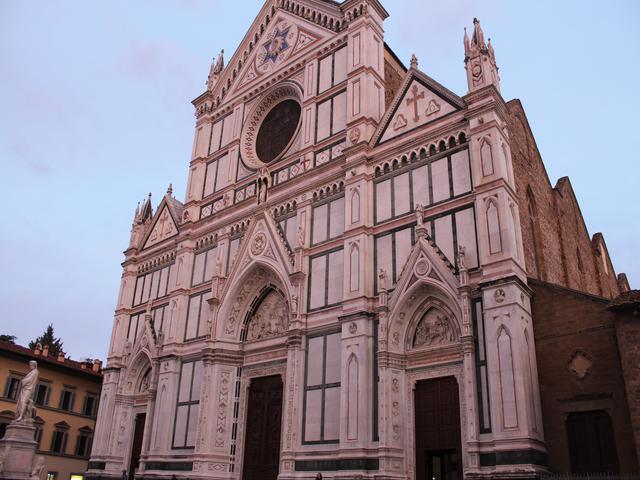Santa Croce Basilica

The 'Basilica di Santa Croce' is a work of Italian Renaissance style that is very characteristic of the city. Consecrated on January 6, 1443, it was declared a minor basilica on December 20, 1933. Its interior stands out for the sobriety and clarity of its architectural language, and its central nave communicates with the side naves through a succession of pointed Gothic arches. Its interior ceiling was covered with a wooden frame and not a stone vault. Furthermore, to finance the works, the order of San Francisco depended completely on contributions from the city and especially from wealthy families, who assumed the cost. of its decoration, but in exchange they obtained the right to be buried in that magical place.
Construction began on May 3, 1294, on the ruins of a small church previously erected by the Franciscans. The architect of the time was Arnolfo di Cambio, commissioned to replace that small church with one even larger than Santa María Novella, started 50 years earlier by the Dominicans.
A prestigious symbol has always been the Church of Santa Cruz, in addition to being a meeting place for the greatest artists, theologians and religious people. Both in times of adversity and prosperity, this place has been of great help in recognizing the identity of the city of Florence at the end of the Middle Ages and the Renaissance. Furthermore, its Gothic architecture and other impressive works make this church a building that represents one of the most important pages in the history of Florentine art since the 13th century.
A curiosity that this sacred place brings us is that the basilica is known for being the place where Stendhal, in 1817, suffered the symptoms of what from that moment on was recognized as Stendhal syndrome. Vertigo, palpitations, confusion, tremors that the individual feels when exposed to charismatic works of art or historical settings.
© Tourblink